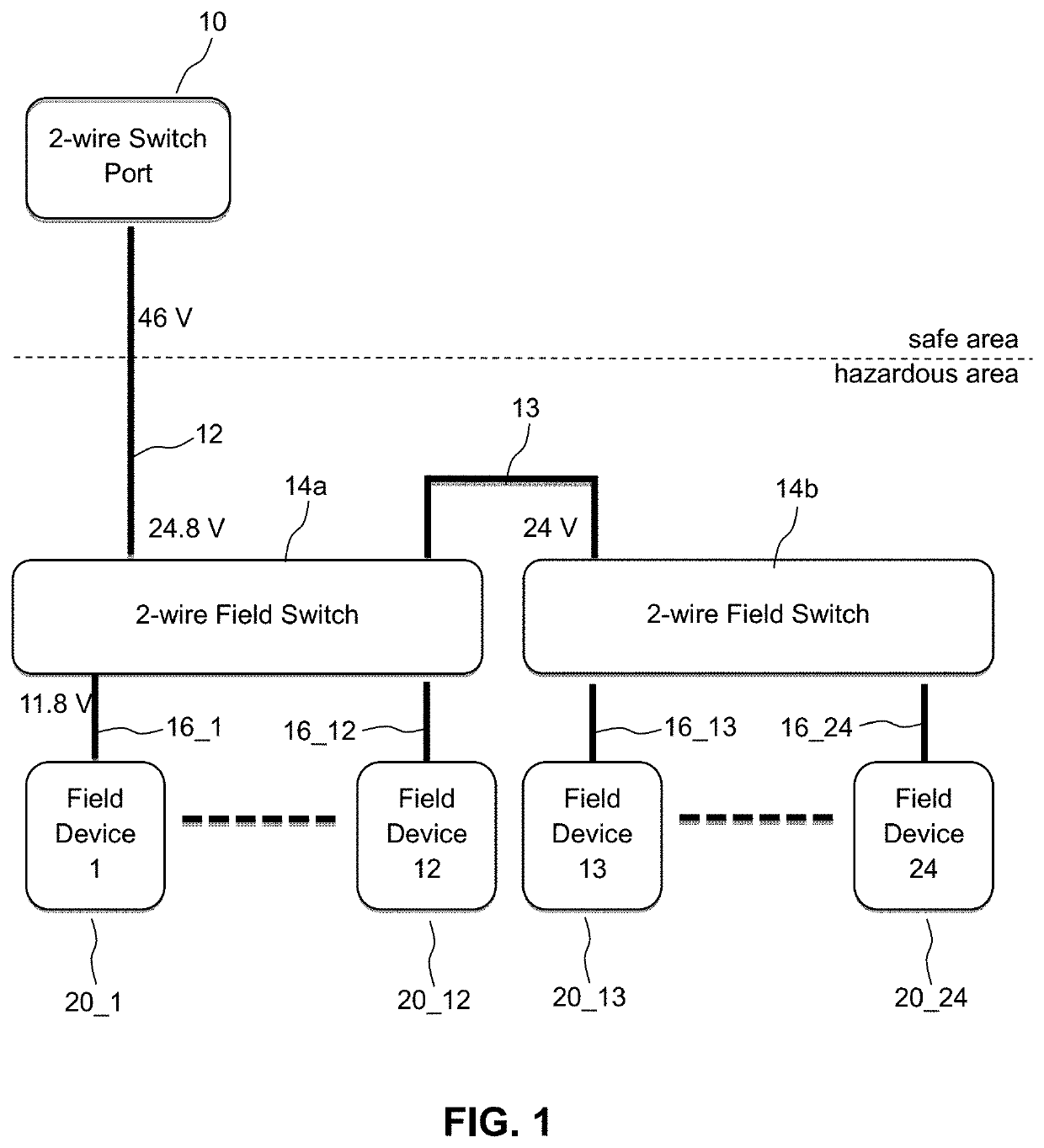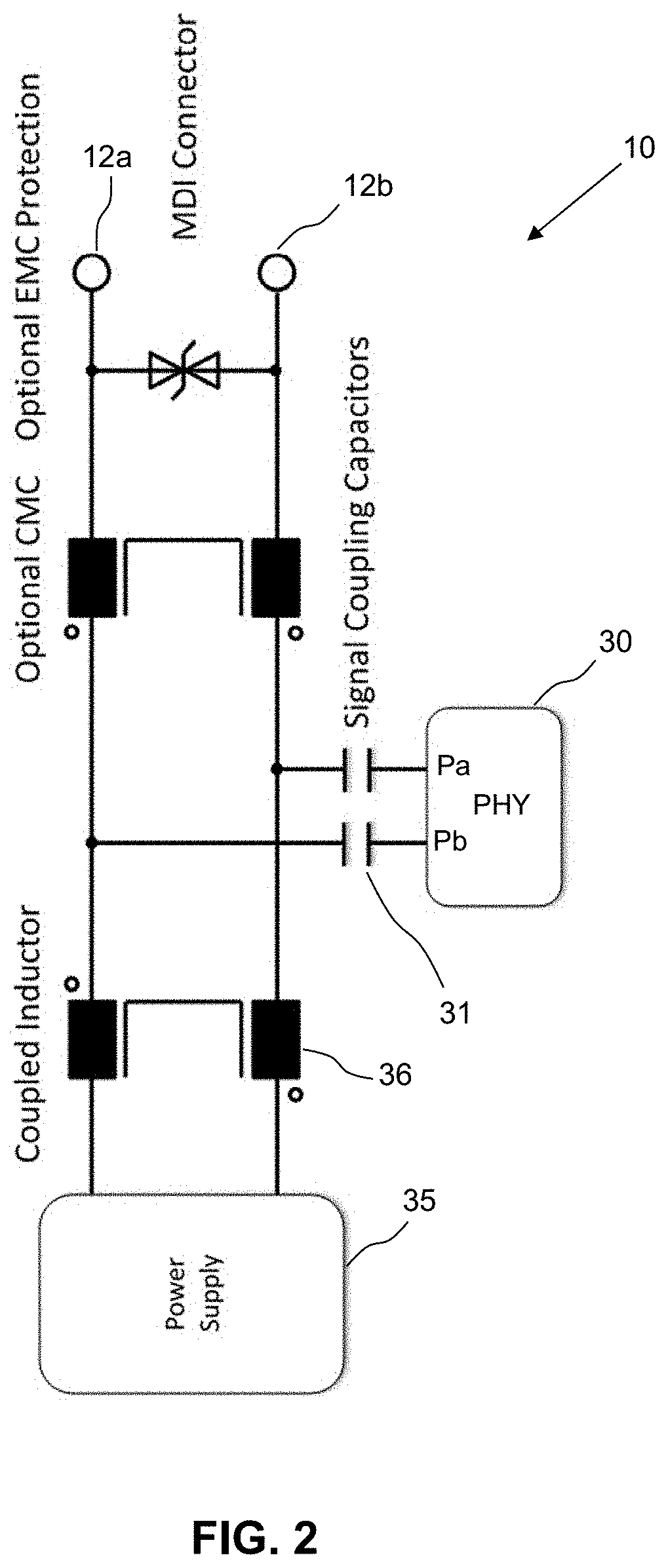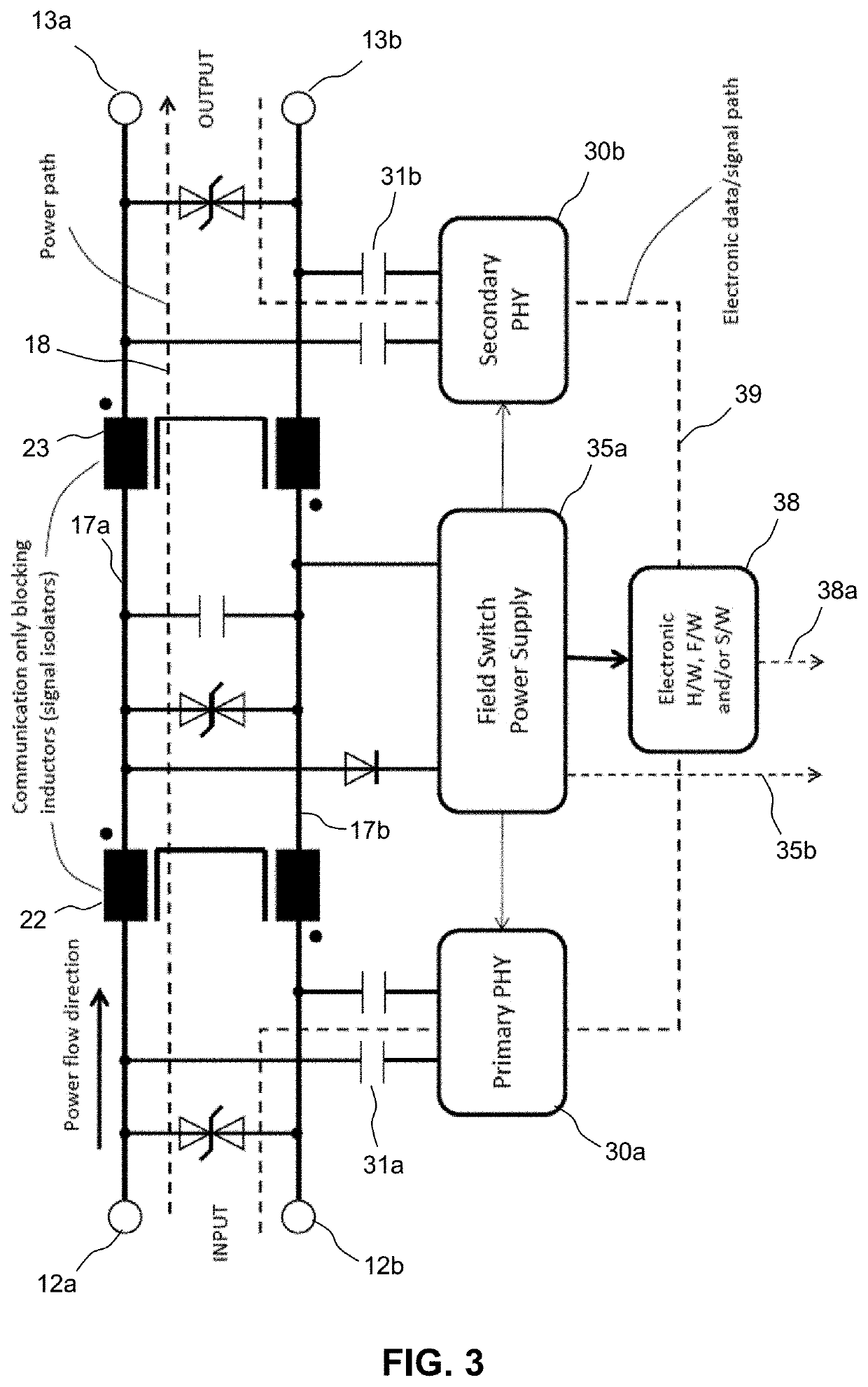Device for Receiving Signals from a Network Cable
a network cable and receiver technology, applied in the field of receiving signals from a network cable, can solve the problems of requiring re-starting of the whole network, risk of training towards an unstable operating state, and inability to perform initial training cycles, etc., and achieve the effect of quick receiving
- Summary
- Abstract
- Description
- Claims
- Application Information
AI Technical Summary
Benefits of technology
Problems solved by technology
Method used
Image
Examples
Embodiment Construction
[0029]Embodiments of the invention will now be described by way of non-limiting example only and with reference to the accompanying drawings, in which:
[0030]FIG. 1 shows a schematic diagram of a network system comprising multiple network cables and field devices connected by field switches, according to an embodiment of the invention;
[0031]FIG. 2 shows a schematic circuit diagram of a 2-wire switch port for sending and receiving data to and from the network system via a pair of conductors of a network cable that carry both power and data;
[0032]FIG. 3 shows a schematic block diagram of part of one of the field switches of FIG. 1;
[0033]FIG. 4 shows a schematic block diagram of a PHY transceiver of the 2-wire switch port of FIG. 2;
[0034]FIG. 5 shows a schematic block diagram of an analogue front end of the PHY transceiver of FIG. 4; and
[0035]FIG. 6 shows a flow diagram of the operation of the PHY transceiver of FIG. 4.
[0036]The figures are not to scale, and same or similar reference si...
PUM
 Login to View More
Login to View More Abstract
Description
Claims
Application Information
 Login to View More
Login to View More - R&D
- Intellectual Property
- Life Sciences
- Materials
- Tech Scout
- Unparalleled Data Quality
- Higher Quality Content
- 60% Fewer Hallucinations
Browse by: Latest US Patents, China's latest patents, Technical Efficacy Thesaurus, Application Domain, Technology Topic, Popular Technical Reports.
© 2025 PatSnap. All rights reserved.Legal|Privacy policy|Modern Slavery Act Transparency Statement|Sitemap|About US| Contact US: help@patsnap.com



